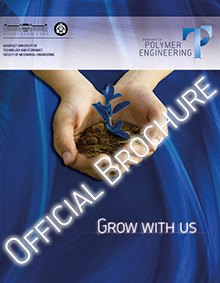Development and structural investigation of 3D printed polymer composites with in-situ foamed core material
Dr. Márton Tomin
Dr. Márton Tomin
Dr. Norbert Krisztián Kovács
Norbert László Lukács
Dr. Péter Tamás-Bényei
Bence Szederkényi
Péter Sántha
Dr. Csenge Tóth
Project summary
The aim of the project is to develop and test composite sandwich structures using additive manufacturing techniques, in which a fiber-reinforced shell layer and a porous foam core layer are produced in a single process step by fused filament fabrication 3D printing. The primary objectives of the project are to investigate the effects of fiber length distribution, reinforcing fiber content and the use of recycled fibers in different types of matrix materials, and to explore the effects of short and long fiber reinforcements. In addition, we aim to develop in-situ foamable filaments by investigating the applicability of different chemical and physical blowing agents, with a particular focus on thermally expandable microsphere-filled biopolymer filaments. The research will analyse the influence of printing parameters such as temperature, printing speed and layer height on the foaming dynamics and the cell structural properties (cell size distribution, cell density) obtained. By optimising the printing parameters, it will be possible to produce cell structures that contribute to improving the mechanical properties of the foam and enhancing the energy absorption capacity. Based on this understanding, it will be possible to produce functional structures with controlled varying porosity along the cross-section, which not only provide high energy absorption capacity, but also modify the other mechanical properties of the structure (e.g. stiffness, strength) in a favourable direction. This allows the development of unique, tailor-made solutions to meet different industrial needs, for example in the automotive industry, where lightweight but strong structures are important, in medical technology, where porous structures are often used as bone substitutes, or in sports equipment, where the main goal is to increase the shock absorbing efficiency of protective equipment. The use of recycled fibers and the reduction in weight through targeted porosity and the associated improvement in functionality also contribute to reducing the environmental footprint.
Project results
Project-related publications
- Berezvai Sz., Tomin M.: 3D-nyomtatott habok nyomtatásihőmérséklet-függő nemlineáris véges rugalmas-képlékeny modellezése. in 'OGÉT 2025 - XXXIII. Nemzetközi Gépészeti Konferencia Nagyvárad, Románia. 2025.05.08-2025.05.11.,31-36 (2025)
- Tóth Cs., Molnár K., Virág Á. D.: Short fiber reinforcement in material extrusion 3D printing: A meta-analysis review with insights into sustainable alternatives. Polymer Composites, , 29850/1-29850/1-39 (2025) https://doi.org/10.1002/pc.29850 IF=4.8 Q1
- Kunsági V., Tomin M.: In-situ habosodó biopolimer filamentek fejlesztése különböző hatásmechanizmusú habképzőszerek alkalmazásával 3D nyomtatási célokra. in 'OGÉT 2025 - XXXIII. Nemzetközi Gépészeti Konferencia Nagyvárad, Románia. 2025.05.08-2025.05.11.,329-334 (2025)
- Szederkényi B., Kovács N.K., Czigány T.: Improving energy absorption in cellular 3D-Printed fiber–reinforced structures with radially reinforced composite shells. Composites Part B: Engineering, 301, 112513/1-112513/11 (2025) 10.1016/j.compositesb.2025.112513 IF=12.7 D1
- Tóth Cs., Virág Á. D.: A modifed Halpin–Tsai model for the tensile properties of short fber‑reinforced 3D‑printed composites using fber content‑dependent orientation correction factor. International Journal of Advanced Manufacturing Technology, , 1-15 (2025) https://doi.org/10.1007/s00170-025-15738-x IF=2.9 Q2
- Kunsági V., Széplaki P., Tomin M.: Exploring the potential of in-situ foam 3D printing: Effects of printing parameters and the development of functionally graded foams. Express Polymer Letters, 19, 706-725 (2025) 10.3144/expresspolymlett.2025.54 IF=2.7 Q2
- Tóth Cs., Ilinyi B., Kovács L.: Layer-level constitutive material model for representing non-linear stress-strain relationships in continuous carbon fiber-reinforced 3D-printed composites. Polymer Testing, 146, 108794/1-108794/12 (2025) https://doi.org/10.1016/j.polymertesting.2025.108794 IF=5 D1
- Tóth Cs., Lukács N. L., Kovács N. K.: The role of the fiber–matrix interface in the tensile properties of short fiber–reinforced 3D-printed polylactic acid composites. Polymer Composites, 45, 13589-13602 (2024) https://doi.org/10.1002/pc.28720 IF=4.8 Q1
- Tomin M., Lukács N., Berezvai Sz.: Development of density-graded sandwich structures with in-situ foaming filaments in additive manufacturing. in 'FOAMS 2024 King of Prusia. 2024.09.17-2024.09.20.,7 (2024)






